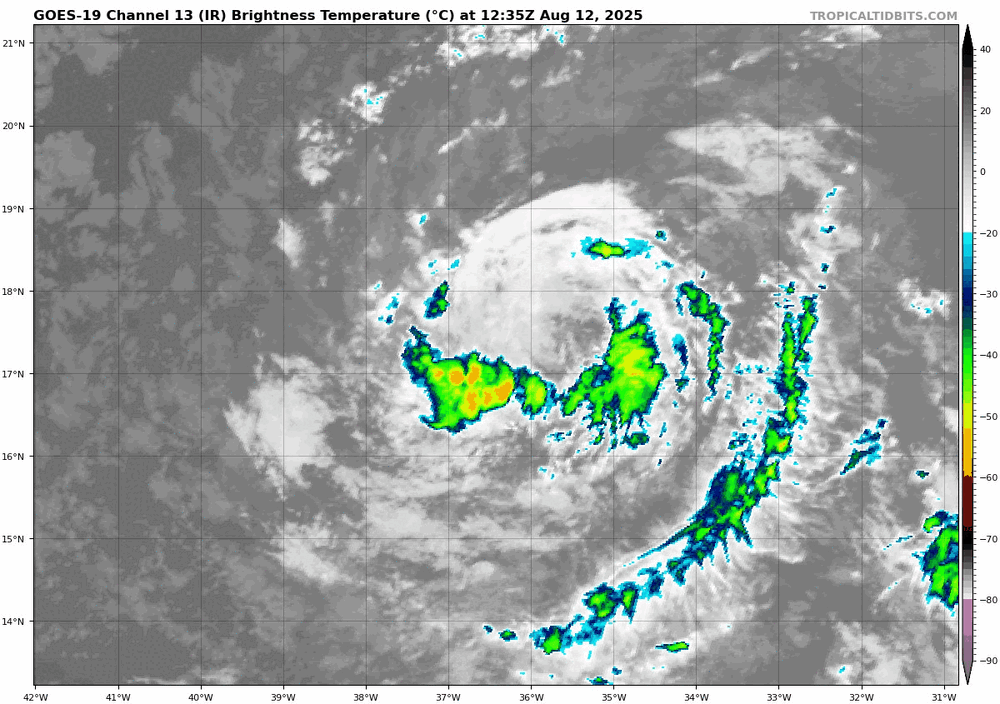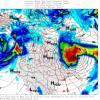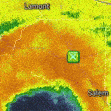All Activity
- Past hour
-
1993: The Great Mississippi River Flood continued as flood waters flowing past Tarbert Landing, , MS reached 832,000 cubic feet per second, which is nearly 4 times the normal August flow. (Ref. AccWeather Weather History) wild how consistently hot it was here in 1993 and how the Midwest was consistently flooding 1955 - During the second week of August hurricanes Connie and Diane produced as much as 19 inches of rain in the northeastern U.S. forcing rivers from Virginia to Massachusetts into a high flood. Westfield MA was deluged with 18.15 inches of rain in 24 hours, and at Woonsocket RI the Blackstone River swelled from seventy feet in width to a mile and a half. Connecticut and the Delaware Valley were hardest hit. Total damage in New England was 800 million dollars, and flooding claimed 187 lives. (David Ludlum) 1955: The greatest DAILY precipitation to occur in the month of August or any month in Richmond, Virginia was 8.79 inches from Hurricane Connie. (Ref. Richmond International Airport Records) 1955 had that incredible record breaking heat in July and then in August the hurricanes came. 1936 - The temperature at Seymour, TX, hit 120 degrees to establish a state record. (The Weather Channel) 1936: The temperature at Seymour, TX hit 120° to establish a state record. Altus tied the Oklahoma state temperature record by reaching 120°. The high of 109° tied the record high for the month of August at Dodge City, KS. From the 12th through the 24th, there was a record 13 days on which temperatures reached 100° or more at St. Louis, MO. (Ref. The Weather Channel) (Ref. WxDoctor) incredible endless heat in 1936 continued
-
Erin has a good circulation, but zero convection near the core. https://www.tropicaltidbits.com/sat/satlooper.php?region=05L&product=ir
-
This is normal as the hottest departures always seem to be to the north. The Arctic has been heating up faster than any other region on the planet. I'm sure eventually, as the years ago by, those departures will reach us. It's like a fire spreading from the roof through the attic and then downwards.
-
In my experience, all these urban locations are much hotter than the suburban places I'm used to. I can tell you about my experiences driving from here to the Poconos, there are two main heat spikes, one is in Queens and the other one is in Eastern NJ. I find both of these places intolerable to walk around outside in more than a few minutes so I didn't unless I was out of gas lol. Once I drove past eastern NJ on I-80 and got past about Morristown, the weather always got much nicer. It's like this every summer, no matter how hot it is, those places are always hot. I can understand why some people have to work in these places, but why would anyone ever want to live there?
-
As you posted, the 11AM position dropped from 5AM’s 17.4N to 17.2N. Also, the new track dips down to 16.5N tomorrow vs the prior advisory’s 17.0N: FORECAST POSITIONS AND MAX WINDS INIT 12/1500Z 17.2N 36.3W 40 KT 45 MPH 12H 13/0000Z 16.8N 39.1W 40 KT 45 MPH 24H 13/1200Z 16.5N 42.3W 40 KT 45 MPH
-
Can they give you an estimate on what you will gain or is it a gamble?
-
Sell all . Euro sucks in convection . Trust us
-
-
hispaniola shred?
-
Great Post!!! This is exactly what I was talking about earlier this morning. Erin is going to be ingesting in significant dry air looking at the push NE to SW from Sarhan Africa especially with that well defined broad circulation. I do predict moderate level of keeping in check and its likely to weaken as it moves west bound and possibly redirected west-southwest for a time due to the nature of the flow. That is an absolute brick wall of dry air. Erin's forward speed towards that brick wall is going to play a significant role as to what's going to happen from this very point clear on into the next 3-5 days because it is moving in tandem with this dry air layer from Africa moving west and southwest from Sarhan Africa.
-
Continuing to move south of forecast
-
If there were a record for the number of cloudy days during the summer with no rain we would break it easily this year...
-
Still a few around here. But far less Lots of acorns dropping though. Weird
-
For our friends in the Antilles, this is increasingly becoming a little close for comfort. Could be some indirect impacts there that become more direct if the south shift continues. To @40/70 Benchmark’s point earlier, that can muck things up if the ridge also ends up trending stronger or the big ULL in Canada is weaker in the long range. Still a lot to sort out here.
-
Tropical Storm Erin Discussion Number 5 NWS National Hurricane Center Miami FL AL052025 1100 AM AST Tue Aug 12 2025 Erin still has a well-defined low-level circulation, but the convective pattern has degraded since overnight, with only a band of moderate convection located within the southern part of the circulation. A 1226 UTC ASCAT-C pass showed a maximum wind barb of 36 kt north of the center, and the intensity is held at a possibly generous 40 kt. Most likely, this is a result of Erin's fast motion, which has been south of due west (265 deg) at about 20 kt. The guidance suite indicates that Erin may continue to lose some latitude during the next 24 to 36 hours due to strong low- to mid-level ridging over the eastern and central Atlantic, but overall the general motion should be westward through early Thursday. After that time, indications are that the ridge may weaken over the western and central Atlantic, causing Erin to turn west-northwestward, but there are model discrepancies on when that might happen and where the break in the ridge actually forms. The trend has been for a weaker Erin in the short term and possibly a stronger ridge, and a number of track models, including HAFS-A and -B, HWRF, the European, HCCA, and the Google Deep Mind, have shifted south and west for much of the 5-day forecast. The NHC forecast has shifted in that direction accordingly, and it should be noted that a significant number of deterministic models and ensemble members still lie even farther south. The environment of marginal water temperatures (26-27 deg Celsius) and low atmospheric instability and moisture appear to remain nearly constant for the next 24 hours or so. Therefore, little to no intensification is expected through early Wednesday. The environment and water temperatures become much more suitable for strengthening by 48 hours, and since the cyclone already has a well-defined structure, it could become a hurricane by late Thursday. Continued strengthening is forecast after that time, and the NHC forecast continues to show Erin becoming a major hurricane by day 5 (early Sunday). There is quite a lot of spread in the intensity models, and the NHC prediction is in the upper regime of the envelope, close to the SHIPS model, Florida State Superensemble, and ICON intensity consensus. KEY MESSAGES: 1. Although it is still too early to know exactly what impacts Erin might bring to the northern Leeward Islands, the Virgin Islands, and Puerto Rico, the risk has increased for Erin to move closer to these islands over the weekend. Interests there should monitor the progress of this storm. 2. There is even greater uncertainty in what impacts, if any, might occur in portions of the Greater Antilles, the Bahamas, the east coast of the United States, and Bermuda next week. As we approach the climatological peak of the hurricane season, this is an opportune time to ensure your preparedness plans are in place. FORECAST POSITIONS AND MAX WINDS INIT 12/1500Z 17.2N 36.3W 40 KT 45 MPH 12H 13/0000Z 16.8N 39.1W 40 KT 45 MPH 24H 13/1200Z 16.5N 42.3W 40 KT 45 MPH 36H 14/0000Z 16.6N 45.2W 45 KT 50 MPH 48H 14/1200Z 17.1N 48.3W 55 KT 65 MPH 60H 15/0000Z 17.8N 51.3W 65 KT 75 MPH 72H 15/1200Z 18.5N 54.4W 75 KT 85 MPH 96H 16/1200Z 19.8N 60.3W 90 KT 105 MPH 120H 17/1200Z 21.4N 65.0W 100 KT 115 MPH $$ Forecaster Berg













